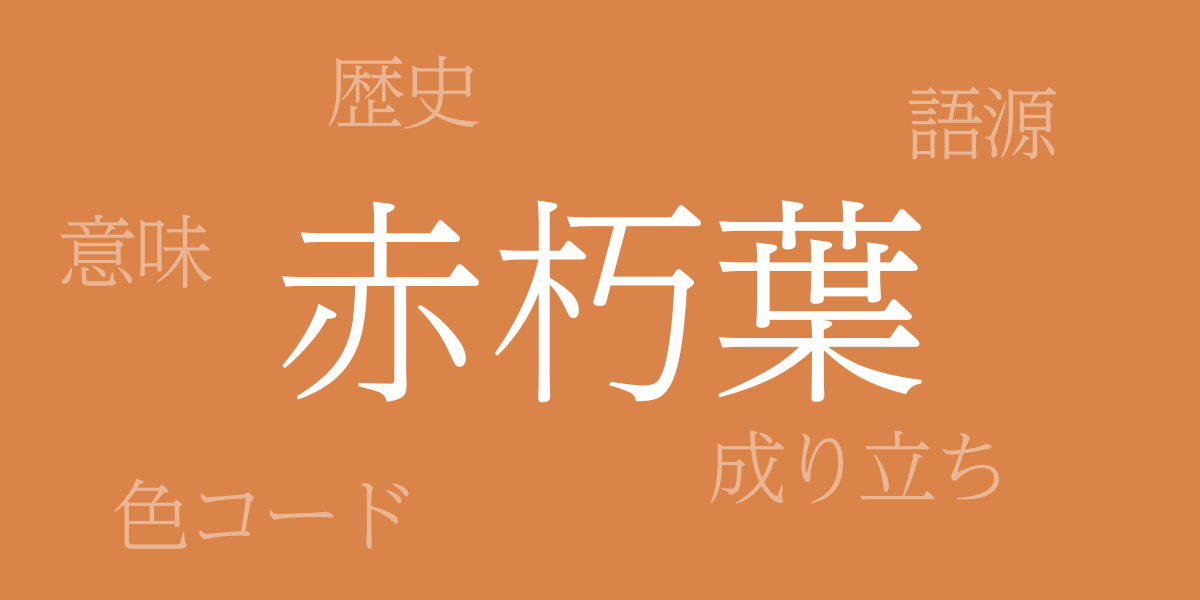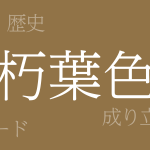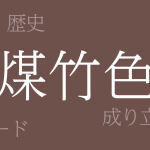As autumn deepens, Japan’s natural landscape plays a symphony of colors, among which the shade of “Aka Kuchiba” (赤朽葉 – あかくちば) particularly strikes the heart. This unique color not only symbolizes the Japanese seasons but also embodies the color perception nurtured through tradition and culture. This article explores the allure of Aka Kuchiba, delving into its history, color code, and Western name.
About Aka Kuchiba (赤朽葉 – あかくちば)
Aka Kuchiba (赤朽葉 – あかくちば) refers to the reddish hue seen momentarily before fallen leaves return to the soil, representing one of Japan’s autumnal colors. This traditional Japanese color captures the transient nature of the environment, characterized by a subdued red. It is used in various traditional crafts such as kimono and Japanese paintings, forming a crucial part of the Japanese aesthetic.
The History of Aka Kuchiba
The color Aka Kuchiba has been rooted in Japanese life since the Heian period, as evidenced by historical documents. The nobility of that era celebrated natural hues, incorporating seasonal changes into their clothing to express a sense of seasonality. Aka Kuchiba, born from such cultural practices, is frequently mentioned in classical literature.
Color Code of Aka Kuchiba
In modern times, color codes are used to replicate precise colors in design and web production. The color code for Aka Kuchiba is as follows:
- HEX: #DB8449
- RGB: R:219 G:132 B:73
- CMYK: C:17 M:59 Y:74 K:0
Western Name for Aka Kuchiba
The Western name for Aka Kuchiba is “Russet.” In English-speaking regions, Russet is also used to describe the color of autumn leaves and harvested fruits, evoking a warm reddish-brown.
Summary on Aka Kuchiba
Aka Kuchiba is one of the colors that intertwine Japan’s nature and culture, and its rich red has been cherished by many. Even in the digital age, its color code allows for accurate reproduction of this hue. Understanding Aka Kuchiba as a traditional Japanese color deepens appreciation for Japanese culture and expands design possibilities.

























